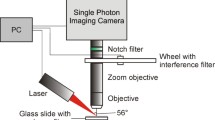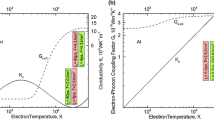Abstract.
Ablation of organic polymers is described on the basis of photothermal bond breaking within the bulk material. Here, we assume a first-order chemical reaction, which can be described by an Arrhenius law. Ablation starts when the density of broken bonds at the surface reaches a certain critical value.
In order to understand the ablation behavior near the threshold fluence, φth, non-stationary regimes must be considered. The present treatment reveals several qualitative differences with respect to models that treat ablation as a surface process: (i) Ablation starts sharply with a front velocity that has its maximum value just after the onset. (ii) The transition to the quasi-stationary ablation regime is faster. (iii) Near threshold, the ablated depth h has a square-root dependence on laser fluence, i.e., h∝(φ-φth)1/2. The ablation velocity is very high even near φth. (iv) With φ≈φth ablation starts well after the laser pulse. (v) The depletion of species is responsible for the Arrhenius tail observed with fluences φ≤φth. (vi) Residual modification of material has maximum near the threshold. (vii) Stationary regimes of ablation demonstrate change of effective activation energy with laser intensity.
The model calculations are applied to Polyimide (KaptonTM H). Here, differences in single-pulse ablated depth determined from mass loss and profilometry should be about 10 nm.
Similar content being viewed by others
Author information
Authors and Affiliations
Additional information
Received: 16 February 1999 / Accepted: 18 February 1999 / Published online: 28 April 1999
Rights and permissions
About this article
Cite this article
Arnold, N., Bityurin, N. Model for laser-induced thermal degradation and ablation of polymers . Appl Phys A 68, 615–625 (1999). https://doi.org/10.1007/s003390050950
Issue Date:
DOI: https://doi.org/10.1007/s003390050950




